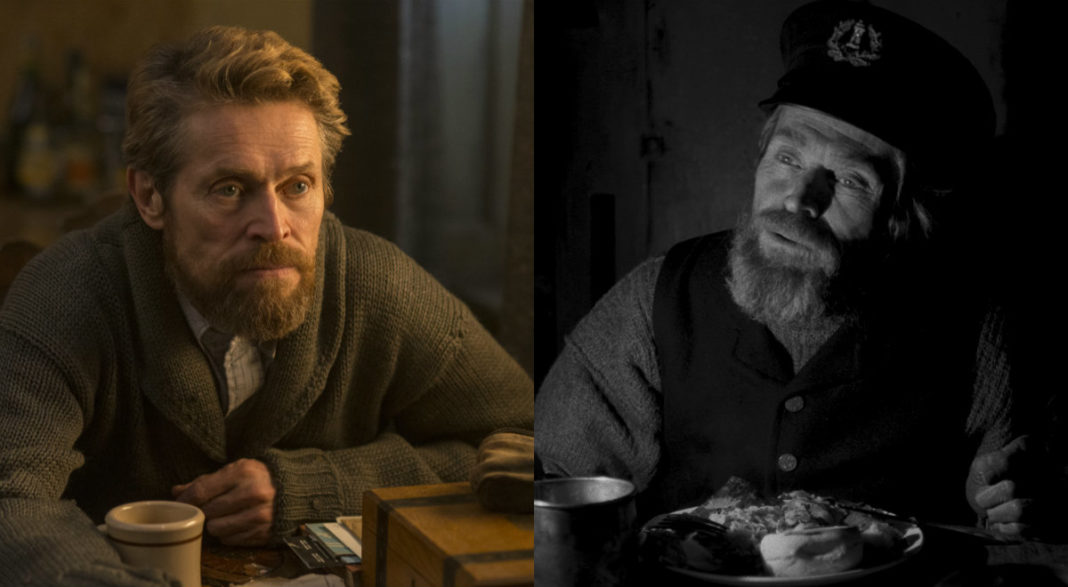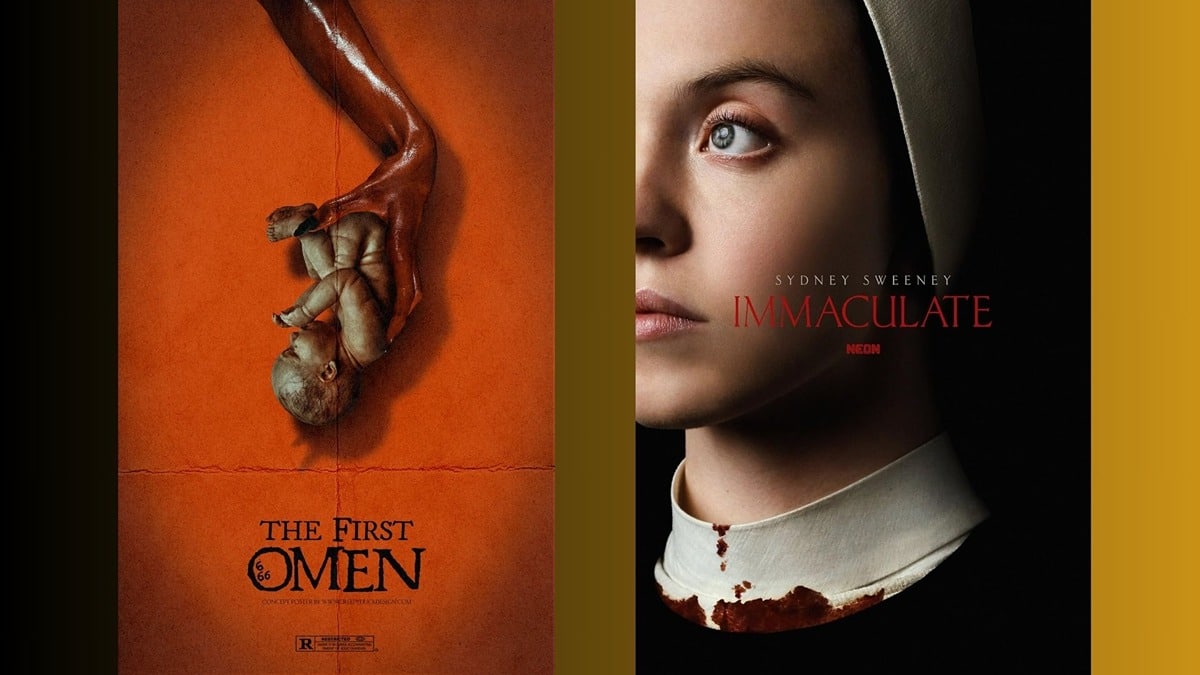Actor Willem Dafoe has had quite a journey from his first uncredited role in Michael Chimino’s infamous Western flop Heaven’s Gate in 1980 and a similarly small role in Tony Scott’s 1983 horror classic The Hunger to getting bigger roles in Streets of Fire, To Live and Die in L.A., and Platoon. The latter led to Dafoe’s first of four Oscar nominations and being cast in the leading role as Jesus in Martin Scorsese’s The Last Temptation of Christ.
The above was all still back in the ‘80s, and in the decades since, Dafoe continued to be one of the most respected actors working with back-to-back Oscar nominations for 2018’s The Florida Project and 2019’s At Eternity’s Gate. There has already been chatter that Dafoe might get a third nomination this year, and he has two amazing performances to back that up.
First, Dafoe co-stars in Edward Norton’s period crime-drama Motherless Brooklyn, playing Paul Randolph, the bedraggled architect brother of powerful New York City real estate mogul Moses Randolph (Alec Baldwin) who might have the answers Norton’s Lionel needs to solve the murder of his detective boss (Bruce Willis).
Dafoe also stars in Robert Eggers’ new movie The Lighthouse, playing a crusty sea captain named Thomas, who spends a few eventful and stormy weeks alone on an island with a younger ward, played by Robert Pattinson. The things those two actors get up to in Eggers’ movie will leave jaws agape.
The actor has already signed on to Eggers’ next movie The Northman, which Dafoe will have to film when he’s not working with Guillermo del Toro on the acclaimed filmmaker’s next movie, Nightmare Alley. On top of that, Dafoe currently has four movies in post-production waiting for release next year, including his reunion with Wes Anderson for The French Dispatch, their third movie together.
In other words, there’s no signs of Dafoe slowing down anytime soon, and why would he?
The Beat had a chance to sit down with the actor at the New York junket for Motherless Brooklyn, just one day prior to Norton’s film closing this year’s New York Film Festival. We talked about both of his new movies but also about his shifting career in general and why he hasn’t ventured into the world of television like so many other actors.
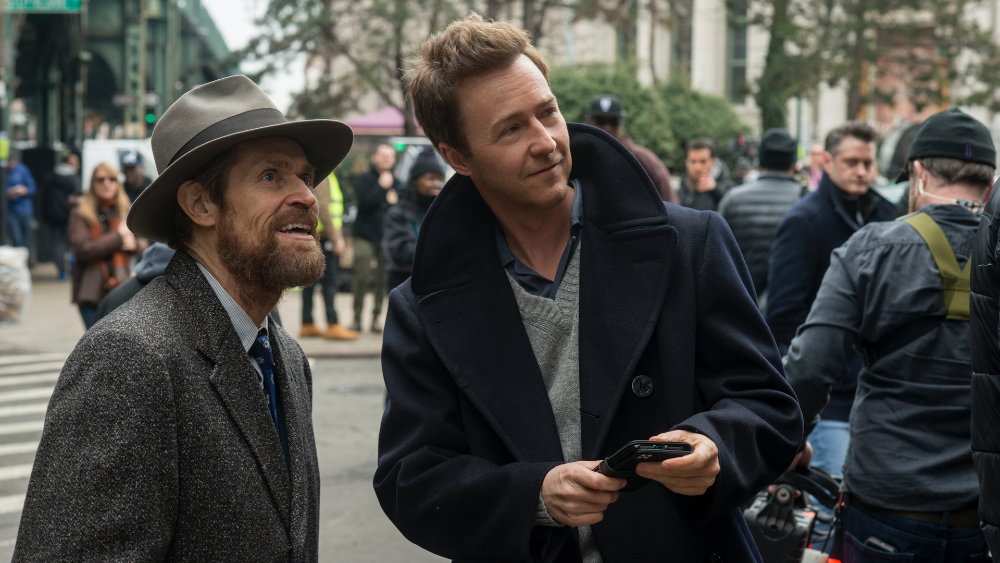
The Beat: I’m sure you’ve known Edward for a long time, and this must have come up over the years since he’s been developing it for so long.
William Dafoe: I didn’t know about it so much. I’m not so close that I knew. It didn’t surprise me when he told me. He’s a tenacious guy.
The Beat: How did he bring the project up to you?
Dafoe: He was pretty direct. I was in town, and he said, “Listen, I’m going to be shooting this thing soon and I need you to do this.” I said, “Send me a script,” and it was that direct and that simple.
The Beat: And he had already picked you to play Paul?
Dafoe: Yeah, because I remember it was right around the time that The Florida Projecthad opened. I think to his mind, people had a little shift in how they saw me. One of the beautiful things about Paul is he’s a character that who you think he is initially he isn’t at all. He’s a very compassionate guy, so I think [Edward] thought that an unlikely compassion also would serve the character of Paul. For me, the interesting thing about Paul is he’s also a little bit of a coward, because he’s still holding out the possibility that he’ll have some sort of reconciliation with his brother, so he’s a beautifully flawed human character I think.
The Beat: It’s funny when we first see you in the town meeting…
Dafoe: You think he’s a crank.
The Beat: Not just that, but I didn’t recognize you, even though I saw you in The Lighthouse not that long before this, and you had a beard in that, too. The way you grew out the beard made me not realize it was you for as few minutes.
Dafoe: In fact, that was an issue. When he asked me to do it, I said, “I’m growing this beard for The Lighthouse,” because this was shot right before The Lighthouse. I said, “I’d love to do it, but I don’t think it’ll wash because 1950s everybody’s clean shaven. It would be weird. I’ll stick out if I had a beard.” He thought about it and he said, “I know what you’re talking about.” He waited a couple of days, and then he called me back and said, “No, no, I think it’s okay. I think we can deal with it.” The truth is, from my mind, it actually helps because it does set him apart. When you first see him, he looks more like a homeless guy or a guy that’s marginalized because of his look and with the long coat and the hat. It feels more period than I ever would have thought it would and more urban.
The Beat: I had wondered which movie you did first.
Dafoe: My beard’s longer in The Lighthouse, and grayer. (laughs)
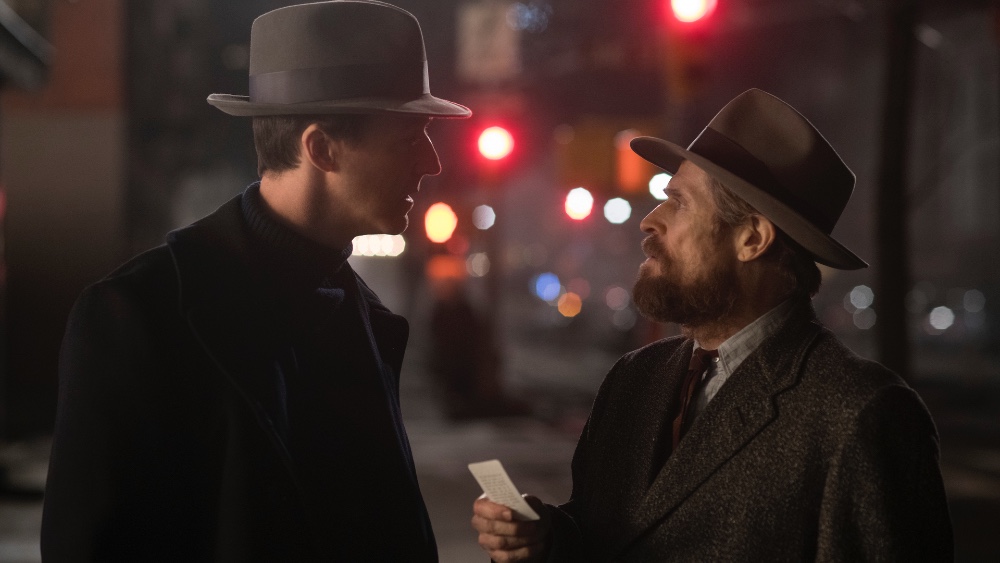
The Beat: Oh, is it really? When Edward is finally ready to start filming, was it easy to come in and do your parts? What’s interesting about the movie is that his character Lionel is in the entire movie, but then he meets these other characters in different places around the city.
Dafoe: It was tricky, but we did it. You know, he’s amazing. He wore a lot of hats and he wore them well.
The Beat: From talking to you over the years, I feel like you don’t need a lot of preparation as an actor.
Dafoe: It depends, it depends. You do as much preparation as you think you need to have an engagement, to have something where it’s a personal stake where you can really get involved and you can pretend. If you feel like, “Oh, that’s not that story or I don’t know what that is,” if you can’t enter that world with a certain kind of confidence, then you have to learn more. You’ve got to create that relationship. For this one, I didn’t have a lot of preparation, but I always saw my job quite literally in the story and those speeches where he’s basically trying to turn Edward on to information. I’ve got these text heavy speeches, very beautifully-written, but the stories were really interesting. That part of the story about the borough authority involving Moses Randolph, the Alec Baldwin character, I had a lot of interest for it, because I thought it’s very resonant, and it explains a lot of modern phenomenon of people who come to power, not only here but other places, Italy, right now Brazil, but here as well.
The Beat: You’ve lived in New York since ’76, and this movie shows the beginning of the biggest changes in New York. Can you talk about your own vision of New York and how it’s changed?
Dafoe: Well, you know, I love New York. Now I’m here less because I also live in Rome, because I married an Italian and also I work all over the world. I always have, so I’m away traveling a lot, but still New York was my home for so many years. I can still consider it my home, and I am here. For me, it just is association with me growing up and coming into kind of an art world, a downtown world that was just forming as I arrived here. But when I come back now, I love New York, I love the energy. It’s a city of ambition and it’s a city of business. It’s not as simple as gentrification, but I think business has always scooped everything else here. Sometimes I worry when I read articles about all the vacancies of all this building that they’re doing and the forcing out of a certain kind of brick in a community. You wonder, you know? When all the mom and pop stores go, and they get replaced by flagship brand stores, New York starts to look like every place else in the world. Plus, you want something to eat, and you don’t have anything in the house, where do you go? You can’t eat fashion or a perfume.
The Beat: Sure. I’m very lucky, since I have my pizza places and the delis in my neighborhood, so I’m good.
Dafoe: Where are you?
The Beat: I’ve been on the Lower East Side for about 26 years. So much has changed in that time, though.
Dafoe: Yeah, that’s true. That’s true, but even there, the places come and go. There’s more boutique-y, personal food places and all that stuff still exists. But Lower East Side, that’s slowly shifting, too. My son used to live down there, and I lived in the East Village when I first came here, so yeah, you see it change. There are degrees, but the East Village used to be a very mixed neighborhood. Now it seems to be a lot of…
The Beat: Young, white people.
Dafoe: Young, white people working downtown.
The Beat: I want to shift to The Lighthouse, because you mentioned traveling a lot for your work. For that movie, you were in Nova Scotia for I don’t know how long…
Dafoe: Long enough. No, it wasn’t a fat schedule, but it wasn’t a thin schedule. It was just about right.
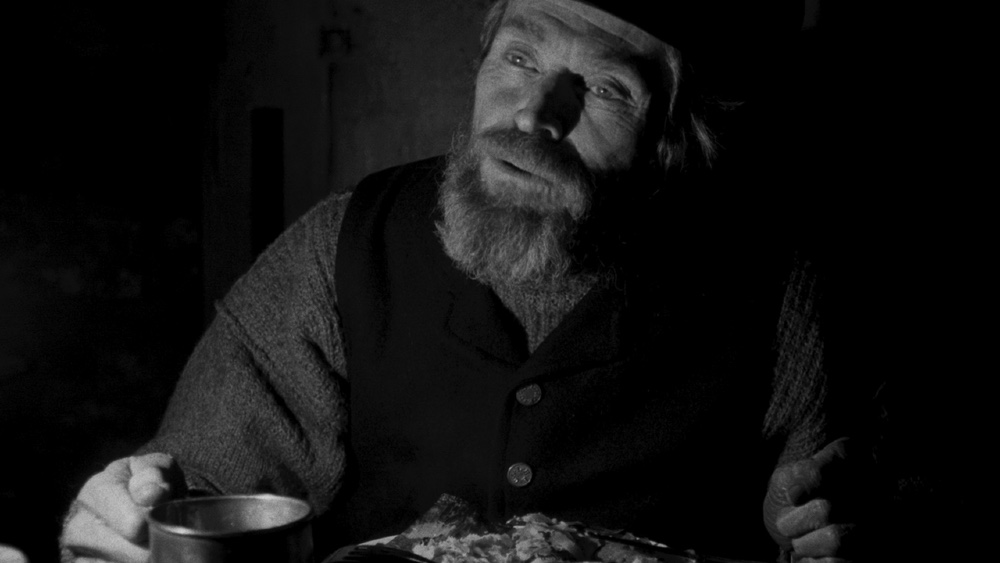
The Beat: How did Robert pitch you the idea of doing this two-hander with Robert Pattinson in a single location?
Dafoe: He doesn’t have to pitch me because I reached out to him after seeing The Witch, and I said let’s work together and he said, “Absolutely.” He knew my work, particularly from the theater, because for many years, he worked in the theater. He knew my work from theater and from movies. We got along fabulously, and we said, “Let’s try to find something.” I had nothing to do with the development of it. He simply came to me one day and said, “Look, I got a thing. It’s this script. It’s you, Rob Pattinson. Yes or no?” Like that. Pretty simple. “We’re going to shoot in Nova Scotia. It won’t be comfy. We’re building everything. We’re going to be out on a rock.” Like that. And I said, “Sounds great.” I’d read the script, that beautiful language, the beautiful relationships, a relationship between the two guys, all the themes that swirl around about identity and belief, I’m totally down with that.
The Beat: I spoke to him about the distinctive look of the film and the lighting used to get it. He was telling me that for the outdoor scenes at night, they had to use such powerful lights the entire crew had to wear sunglasses. How do you deal with that as far as acting under such heavy light?
Dafoe: We weren’t wearing sunglasses.
The Beat: I know. That’s why I’m asking.
Dafoe: We were guinea pigs. It’s funny that he remembers that. It’s true because black and white, that kind of film he was shooting – I guess it’s Double-X – you got to light it a lot. I’ve done that before. I remember on Antichrist, on some of the things for Lars von Trier, those lights were so hot you would get burned if you were too close to them. It’s like old studio lights I used to hear about from the Thirties and Forties, I guess. I don’t remember the light so much as just the weather and being cold and wet, but that was what makes the movie. That’s what gets you there. You can’t act that stuff. That roots it. Then you’re really doing something, then you’ll have a stake. It’s not make-believe if you’re having an experience that changes you and that becomes in the mix to make the things you’re doing stick, because they aren’t to get love or to make money. They’re an experience that you’re having and the film is a reflection of that filtered through many other things, so it feels very healthy to shoot on location where the location tells you what to do. It informs everything.
The Beat: I love that you referred to Antichrist. That’s another movie that looked amazing, and as moviegoers, we can appreciate how beautiful it looks without realizing what you’re going through as actors for Lars von Trier to achieve that look.
Dafoe: The visual language, the cinema language of Lighthouse is incredible. That also guides you because it’s really established before. It was complex enough and they were doing some very experimental and very risky things visually, not just as far as framing or camera movement but treatment of the film and all that, including the shooting on film. All those things really, that almost came first and then we had to submit to some of those restrictions. Sometimes it’s good to have restrictions like that. For example, when you’re shooting on film, you can’t shoot forever. So when you shoot, you live or die.
The Beat: You mentioned the shift you felt with The Florida Project, which I found to be an interesting thought. Did you feel yourself that you had that shift?
Dafoe: I don’t. You know, I live with myself. I know me. Everything surprises me, nothing surprises me, but no, I just felt like there was an appreciable new dimension. I mean people that know a lot of my films probably didn’t feel that, but I’m just saying popularly. Even though The Florida Project wasn’t widely seen, I think the people that saw it were quite positive about it. I mean it had a lot of good faith and people really loved it. That was my feeling. I mean, I’m an actor. They’re not going to tell me they hate it.
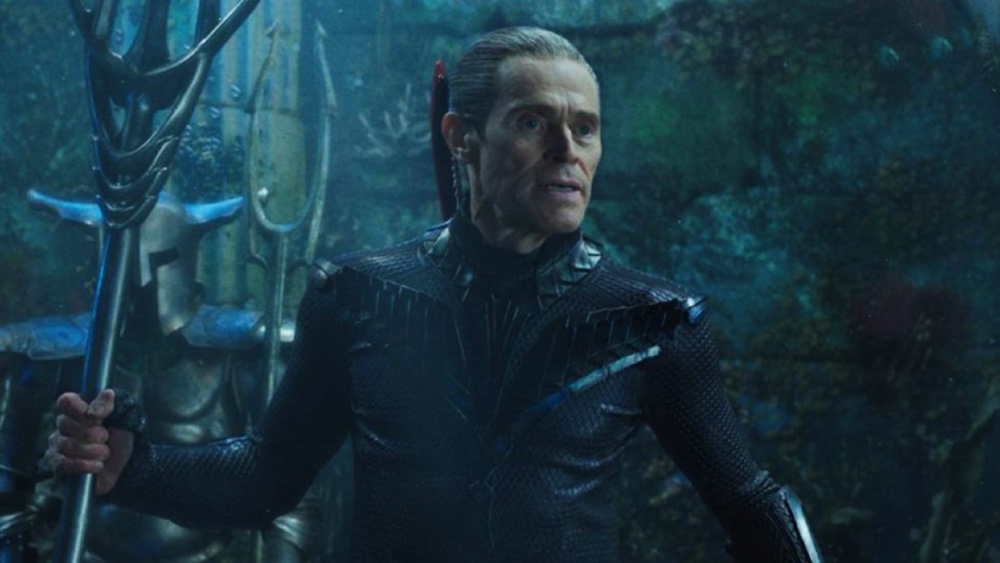
The Beat: I would think that you would know yourself better than anyone else. You’ve worked with some of the same directors again and again like Abel Ferrara, Lars von Trier and Wes Anderson, but then you’ll do something unexpected like Aquaman.
Dafoe: Yeah, but I think you don’t want to get stuck. You don’t want to have a go-to thing all the time. It’s not just to do for versatility. It’s really so you don’t get programmed. You don’t get mechanical. You don’t say, “Oh, I know what this is…” or “They want me to do THIS,” because if you shift the situation, then you have to adapt to the situation. Sometimes, I think the most important thing for an actor is to be flexible, I mean deeply flexible.
The Beat: Is that why you’ve shied away from television? You haven’t really jumped into that world.
Dafoe: Listen, I don’t have enough time for theater. I still have opportunities in film that interest me. Those worlds are coming together, but I also think how television is made – movies and television still are different. I’ve made movies that end up on television. It’s not just about how you see them. It’s also what their ambitions are and what kind of people and how they’re built. I don’t know the world of television, to be honest with you, and when I have free time, I’d rather read or catch up on movies. I made a little bit of a choice, but also things that come to me are more from the movie world.
The Beat: All that stuff has been particularly great in recent years. I also really liked the Pasolini movie you did with Abel Ferrara, and I was shocked that it took five years to get it released here.
Dafoe: Well, it got released everywhere else in the world, but in the States I think they just thought it was too … I heard someone say, “Who wants to see a film about a dead Italian gay leftist director?” Well, I get it. If that’s what you think he is, then you probably shouldn’t release the movie.
The Beat: Thankfully, the Metrograph programmed the movie, and MOMA did the retrospective on Abel around the same time to revive interest in the movie and him.
Dafoe: Also, they’re going to do Abel’s next movie called Tommaso that I did with him that we showed at Cannes. Kino Lorber is going to release it. They did a good job with Pasolini, because it’s not a big release, but they got it out there. There was a good critical response, and they got it to places that aren’t by the numbers. They really selected the right places where people would come and people would appreciate [it].
The Lighthouse is now playing in select theaters and will expand nationwide on Friday, October 25, while Motherless Brooklyn hits theaters on November 1. You can read our interview with the former’s director Robert Eggers here and our interviews with Edward Norton and Gugu Mbatha-Raw sometime next week.


